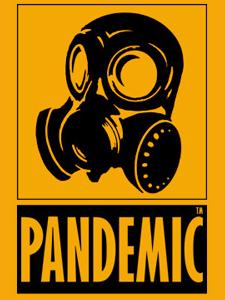Tag Archives: plants
ZOMBIE SURVIVAL – Survival tips for the urban living: Part 1 – Nuclear Radiation
Though many survivalists like to prepare for TEOTWAWKI (the end of the world as we know it), joblessness and homelessness have led me to the end of the world as I know it. With coffee in hand, I opened the warehouse door of my temporary digs to greet the dawn. Only, it’s noon, there’s a downpour, and the smell of rubber from a pile of decomposing tires greets me. This marks Month 4 in New Orleans and two years since I was laid off.
In this vein, I finally started reading Mat Stein’s two survival books, When Technology Fails (2008) and When Disaster Strikes (2011). I also headed over to Jim Rawles’ Survival Blog and Mat’s website, whentechfails.com.
Instead of a lone-wolf, Mad Max world which plays well on film, Stein reasonably argues that individual survival relies on a community of like-minded folks. So plan your survival migration or shelter with room for your core group. The essential wisdom from both books and most survival websites is to plan a strategically sound survival budget, taking into account the climate of where you expect to be after you hit the road.
Few experts would call the US a failed or fragile state given to eco-migration, but most Americans already live in toxic zones, with our land, air and water being systematically poisoned by industry. New Orleans is only one of many areas suffering from hyper-industrialization and weather destruction. Locals call the corridor from here to Baton Rouge, “Cancer Alley.”
Thanks to Corexit and the Macondo Blowout (among hundreds of other oil “spills”), Gulf seafood is unfit for human consumption, and anglers and beachcombers are suffering from a host of health issues including respiratory failure. Birds, turtles, dolphins, and other sea life are dying in mass numbers or are showing up deformed, while federal agencies insist all is well.
I met a man who helped with the cleanup. The toxic brew severely damaged circulation in both his legs, leaving him wheelchair-bound. Grandmothers of the Gulf organizer, Laura Regan, insists her and her husband’s respiratory problems are from swimming in the Gulf after authorities promised the water was safe. She, along with most coastal residents, believe they are still spraying Corexit today. That may explain why the Louisiana Senate buried SB 97 in committee last year, which would have banned Corexit and any other oil dispersant not categorized as “Practically Non-Toxic.”
My romantic notion of sticking my toes in the famous Mississippi after I got here was sullied by the strong industrial odor wafting from the river. It sickened both of us who walked the levy that day.
All over the planet, giant multinational corporations are singly and jointly destroying the landbase for huge swaths of people, and New Orleans is no exception. Three major wars settled this area so that tens of thousands of oil wells could be built, right along with all the chemical and oil refineries, labs, agrochemical dumps, and the 25-year-old Waterford nuclear plant, 20 miles outside the city.
Because Fukushima radiated the Northern Hemisphere, because fracking releases rock-bound uranium that contaminates our local water table, and because I’m in Cancer Alley just miles from Waterford, this first essay focuses on nuclear survival.
Some nuclear survival tips are obvious. Dr John W. Gofman, a distinguished medical and nuclear scientist who worked on the Manhattan Project to develop the atomic bomb estimated in 2001 that 75% of US women who develop breast cancer get it from medical radiation. Simply refuse such tests, including airport body scanners.
When the US Supreme Court thwarted public will and handed Bush Florida, and thereby the presidency, we were led into 9/11 and nuclear war on the Middle East and Africa. Bob Koehler writes:
“Iraq Syndrome must include awareness of our toxic legacy, in particular the radioactive fallout resulting from exploding several thousand tons of depleted uranium munitions. Last year, the International Journal of Environmental Research and Public Health published a study of the devastated city of Fallujah, pointing out that, among much else, it is experiencing higher rates of cancer, leukemia and infant mortality than Hiroshima and Nagasaki did in 1945. And birth defects abound: ‘Young women in Fallujah are terrified of having children,’ a group of British and Iraqi doctors reported.”
Industrial civilization’s war on the environment is no less radioactive. The US hosts 25% of the world’s nuclear power plants, and even without incidents or accidents, they leak radiation into the local environment, as evidenced by the cancer clusters around nuke plants. Being in New Orleans, I’m exposed daily to whatever is dumped in the Mississippi, including leaking radioactive particles from the several nuke plants that dot its length.
Lest anyone believe health officials and nuclear energy proponents that the harm from Fukushima is minimal (and no longer poses a threat), all they need do is look at the Chernobyl casualties, where only one reactor was involved. Last year, researchers published their review of over 5,000 scientific articles and studies and concluded that a million people have succumbed to Chernobyl radiation. According to one source, the authors explain:
“Emissions from this one reactor exceeded a hundred-fold the radioactive contamination of the bombs dropped on Hiroshima and Nagasaki. No citizen of any country can be assured that he or she can be protected from radioactive contamination. One nuclear reactor can pollute half the globe. Chernobyl fallout covers the entire Northern Hemisphere.”
Fukushima lost four reactors, with three in complete meltdown, but pro-nuke officials from the World Health Organization on down promise thru lying teeth this poses little to no threat to our health or the environment. As Chernobyl showed, in 30 years, we can expect many Northern Hemisphere survivors to sport tumors and other cancers resulting from radiation-damaged DNA. We can only pray for the unborn, from those healthy enough to reproduce.
Expectedly, US officials also lied about the Three Mile Island nuclear disaster, while cancer rates jumped for those nearby. Richard Wilcox wrote an excellent article on all this that is well worth the read:
“Independent testing in Japan has revealed that fallout from the accident and ongoing accumulation has contaminated food supplies in the Northeast and Tokyo.”
From plutonium-laden fish, “the most toxic substance known in the universe,” to radioactive cesium in California tuna, Wilcox itemizes the destruction of our food supply. Radioactive fallout, of course, contaminates grazelands, meaning our milk and dairy products are also contaminated.
All of us have cause, right now, to ensure our water and food is clean and radiation-free. All of us have sound reason to become survivalists. Here are some tips to protect you and yours…
10 Essentials for Surviving the Zombie Apocalypse: A Practical Guide
In many ways, vampires and zombies are two sides to the same coin. Both are undead. Both spread their condition through bites. Both have specific methods in which they can be killed. But vampires are the patricians of the undead with fussy European accents, bright sparkly skin, cheerleader girlfriends, tailored suits, and slinky party dresses. Zombies, on the other hand, are strictly blue-collar and, I daresay, typically American. They roam the streets, disheveled, dispossessed, homeless. They are the middle class, marginalized into oblivion.
Taken singly, zombies are slow, idiotic, and relatively easy to kill. Laughable, even, with their witless drive and ungainly movements. One zombie? Destroy the brain, drop the shambler. But collectively, zombies are an inexorable force, knocking down chain-link fences, busting through windows, treating your neighbors like bowls of spinach dip. They’re the ultimate union. And their collective bargaining powers can’t be legislated away.
To survive the zombie apocalypse, you’re going to need a plan. Survival means you’re going to have to accept the blue-collar ethos that the zombies embody. Time to roll up your sleeves, put on your best Mike Rowe face, and get ready to do some dirty work. In no particular order, here are 10 essential items for surviving the zombie apocalypse. For a more in depth exploration into zombie apocalypse survival techniques and items, feel free to check out This Dark Earth, my zombie survival treatise-cum-novel. Wait. Not a cum-novel. Strike that last bit. Sheesh, you people.



Headknockers come in a variety of shapes and sizes. You can find one in every garage, every toolbox in America. A hammer, a hatchet, a crowbar, a two-by-four. A Louisville slugger. Destroy the brain and you’re good to go. Big plus: relatively quiet and no need to reload.
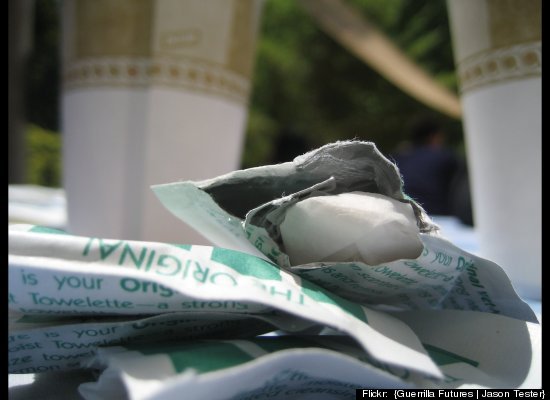



Any more zombies than two, your best bet is hunching over in a protective ball, placing your head between your legs and giving your gluteus maximus one last smooch in thanks for all the good times.
If you have Kevlar motorcycle gear, in addition to looking cool, you’re freaking gold, hombre.
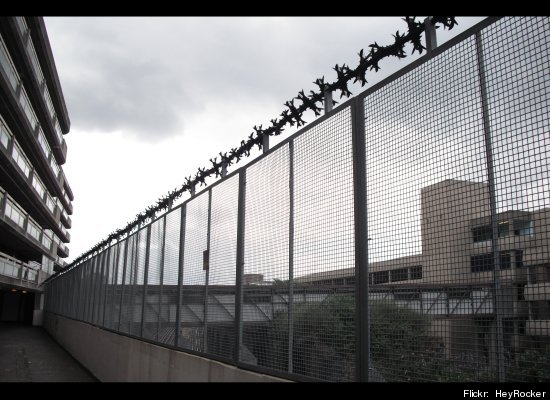


Unless you’re into the weird stuff.
DOOMSDAY 2012 – NATURAL DISASTERS COULD WIPE OUT YOUR ZOMBIE WORRIES
Floods, earthquakes, and volcanic eruptions. These are just a few of the natural disasters that may befall our planet between now and December 21st, 2012. As we speak, the summer solstice is upon us, but it’s the winter solstice that we should be worrying about.
Flooding. There are several different scenarios in which massive floods may overcome our planet. One is oceanic rise. If the oceans rise, the coastal areas of the world will recede, and millions of people living in these areas will either die or have to move further inland. Global warming is currently being blamed for the Greenland ice sheets and polar cap melt off that has been going on for years. I think the majority of people are skeptical of this diagnosis, or just don’t know what to think, as scientists seem to fall on both sides of this debate. What no one can dispute is that this is happening.
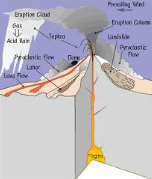
If solar flare/sunspot activity on 12/21/2012 should be great enough to gain entrance to our atmosphere on this day, it could accelerate the ice melt and the oceans will rise. If the temperature of the earth’s surface rises just a few degrees, this would also happen. How quickly, obviously no one knows. One thing rapid or even gradual ice melts will do is disrupt the thermohaline circulation of water in the Atlantic Ocean, an ocean-based system of heat delivery sometimes referred to as the North Atlantic thermal conveyor belt.
The northeastern States, eastern Canada and, primarily, Europe enjoy warmer climates than they otherwise would because of the thermohaline circulation. This vast ocean conveyor sweeps warm, salty water from tropical latitudes north along the surface. After shedding heat to the atmosphere, the chilled brine becomes denser and sinks. Thousands of feet beneath the surface it flows back toward the equator, completing the loop.
But as the climate warms disproportionately at the poles, the gears of the system begin to wobble. Freshwater runoff from Greenland’s ice cap and from melting glaciers across the Arctic, combined with increased precipitation, will form a thick, buoyant cap over the North Atlantic. Already, this gigantic vortex may be sputtering. The surface of the North Atlantic is becoming noticeably less salty, and thus less driven to sink.
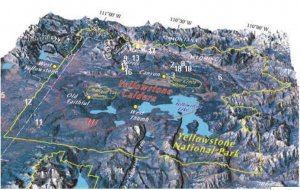 Thermohaline circulation shut down as recently as 8200 years ago, and some scientists contend that the Little Ice Age of 1300 to 1850 was due to a hiccup in the system. The chance of another collapse is hotly debated, in scientific circles, and may throw us into another Little Ice Age again.
Thermohaline circulation shut down as recently as 8200 years ago, and some scientists contend that the Little Ice Age of 1300 to 1850 was due to a hiccup in the system. The chance of another collapse is hotly debated, in scientific circles, and may throw us into another Little Ice Age again.
Earthquakes are a distinct possibility, and tectonic shift may occur. Tectonic shift and rise can be a direct result of earthquakes, as well as the weight and motion of melting water, among other things. It may well force the earth’s mantle to rise up and reform our planet.
Volcanic eruptions are a potentially catastrophic event that could be in store for us. The caldera at Yellowstone National Park, the World’s largest volcano, is said by scientists to be overdue for an eruption. This volcano is sometimes referred to as a Super volcano. There are over 3000 recorded earthquakes at Yellowstone National Park each year, and any sort of cataclysmic event on a worldwide scale may be the spark that 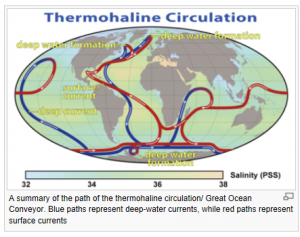 forces the caldera to erupt. That eruption, along with any others that may happen on that fateful day, 12/20/2012, would put enough volcanic ash into the atmosphere, as to blot out the sun for years, perhaps even decades. And then there are all the different types of gasses that will also be in the air, and oxygen purity levels will drop dramatically. Without Photosynthesis, a process whereby plants capture the suns energy to split off water’s hydrogen from oxygen. Hydrogen is combined with carbon dioxide to form glucose and release oxygen. If the sun is blotted out and plants can’t grow and capture carbon dioxide, while releasing oxygen, we may lose our ability to breath, among other things. This will also have a devastating effect on the global food chain. In my opinion, this will be the start of a fatal global downward spiral, from which there will be no return.
forces the caldera to erupt. That eruption, along with any others that may happen on that fateful day, 12/20/2012, would put enough volcanic ash into the atmosphere, as to blot out the sun for years, perhaps even decades. And then there are all the different types of gasses that will also be in the air, and oxygen purity levels will drop dramatically. Without Photosynthesis, a process whereby plants capture the suns energy to split off water’s hydrogen from oxygen. Hydrogen is combined with carbon dioxide to form glucose and release oxygen. If the sun is blotted out and plants can’t grow and capture carbon dioxide, while releasing oxygen, we may lose our ability to breath, among other things. This will also have a devastating effect on the global food chain. In my opinion, this will be the start of a fatal global downward spiral, from which there will be no return.
Last but not least. Again, in my opinion, the most probable occurrence will be an eruption of the volcano at Cumbre Vieja. Cumbre Vieja is an active volcanic ridge on the volcanic ocean island of Isla de La Palma in the Canary Islands, Spain. History has recorded volcanic eruptions of the Cumbre Vieja in 1470, 1585, 1646, 1677,m 1712, 1949, and 1971.
 During the 1949 eruption, three vents—Duraznero, San Juan and Hoyo Negro—opened and expelled massive amounts of lava. Also during the eruption two earthquakes happened centered near Jedey. Following the earthquakes a fracture appeared, approximately two miles long, about 1/10 of the exposed length of the Cumbre Vieja. Parts of the western flank of the Cumbre Vieja ridge moved about 1 mile sideways and 2 miles downwards towards the Atlantic Ocean. Scientists have hypothesized that an eruption or even an earthquake would send the western flank of the island sliding into the Atlantic Ocean, creating a Mega Tsunami of biblical proportions. Computer models indicate the resulting gravitational landslide will enter the Atlantic Ocean and create the so called Mega Tsunami, with the initial wave estimated at some 200 feet in height, and a peak to peak height of 1 mile. Estimated speed of the wave is 600 mph. It will reach the African coast in 1 hour, southern england in about 3 to 4 hours, and the eastern seaboard of the United States in about 6 hours. The initial wave will have subsided into a succession of smaller ones each about 100 to 200 feet in height, and may swell to 400 to 600 feet high at a distance of 1 to 2 miles apart, while retaining the original speed. Computer models indicate differing inland inundation measurements, between 15 to 30 miles or more according to the volume of water.
During the 1949 eruption, three vents—Duraznero, San Juan and Hoyo Negro—opened and expelled massive amounts of lava. Also during the eruption two earthquakes happened centered near Jedey. Following the earthquakes a fracture appeared, approximately two miles long, about 1/10 of the exposed length of the Cumbre Vieja. Parts of the western flank of the Cumbre Vieja ridge moved about 1 mile sideways and 2 miles downwards towards the Atlantic Ocean. Scientists have hypothesized that an eruption or even an earthquake would send the western flank of the island sliding into the Atlantic Ocean, creating a Mega Tsunami of biblical proportions. Computer models indicate the resulting gravitational landslide will enter the Atlantic Ocean and create the so called Mega Tsunami, with the initial wave estimated at some 200 feet in height, and a peak to peak height of 1 mile. Estimated speed of the wave is 600 mph. It will reach the African coast in 1 hour, southern england in about 3 to 4 hours, and the eastern seaboard of the United States in about 6 hours. The initial wave will have subsided into a succession of smaller ones each about 100 to 200 feet in height, and may swell to 400 to 600 feet high at a distance of 1 to 2 miles apart, while retaining the original speed. Computer models indicate differing inland inundation measurements, between 15 to 30 miles or more according to the volume of water.
This would greatly damage or destroy cities along the entire North American eastern seaboard, and tens of millions would be killed from Maine to Florida, and everything In between.
So there you have it. Not a pretty picture is it.
How a Zombie Outbreak Could Happen in Real Life
Could zombies actually exist? What would it take for human corpses to rise up and hunt the living? We often think zombies are scientifically impossible — but actually, they’re just very implausible. Here’s one wayThe Walking Dead could happen in real life.
To start our zombie thought experiment, we need to make some basic assumptions. First, we’re ignoring all supernatural zombie origins. We’re also going to set aside space radiation, mysterious comets, or Russian satellites. Our focus will be narrowed to biological origins –- a zombie contagion. Of course, there are many different zombie scenarios in books and film, and no one theory is going to cover all of them perfectly.
The first aspect of human zombification we need to tackle is basic zombie physiology. In virtually every zombie scenario, zombies are able to function despite increasing levels of physical deterioration due to injury or decomposition. There has to be some mechanism for transmitting neural impulses from the brain to various body parts, and for providing energy to muscles so they can keep operating.
The most common science fictional explanation for zombie outbreaks is a virus — but viruses and bacterial infections are not known for building large new physical structures within the body. So let’s count viruses out. Instead, the need for a mechanism to activate deteriorating body parts actually provides the cornerstone of what is, in my opinion, the strongest theory: fungal infection.

We know that fungi can infect humans. We also know that fungal networks exist in most of the world’s forests. These mycorrhizal networks have a symbiotic relationship with trees and other plants in the forest, exchanging nutrients for mutual benefit. These networks can be quite large, and there are studies that demonstrate the potential for chemical signals to be transmitted from one plant to another via the mycorrhizal network. That, in turn, means that fungal filaments could perform both vascular and neural functions within a corpse.
This leads us to the following scenario: microscopic spores are inhaled, ingested, or transmitted via zombie bite. The spores are eventually dispersed throughout the body via the bloodstream. Then they lie dormant. When the host dies, chemical signals (or, more accurately, the absence of chemical signals) within the body that occur upon death trigger the spores to activate, and begin growing. The ensuing fungal network carries nutrients to muscles in the absence of respiration or normal metabolism.
Part of the fungal network grows within the brain, where it interfaces with the medulla and cerebellum, as well as parts of the brain involving vision, hearing and possibly scent. Chemicals released by the fungi activate basic responses within these brain areas. The fungi/brain interface is able to convert the electrochemical signals of neurons into chemical signals that can be transmitted along the fungal network that extends through much of the body. This signal method is slow and imperfect, which results in the uncoordinated movements of zombies. And this reliance on the host’s brain accounts for the “headshot” phenomenon, in which grievous wounds to the brain or spine seem to render zombies fully inert.
This leaves the problem of zombie metabolism. Where do the zombies get the nutrients needed to perform physical activity, plus the necessary nutrients to fuel the life-cycle of the fungi? This is most easily explained by the zombies’ constant, endless drive to devour meat. The fungal network would still need some way to metabolize meat, and zombies seem to be able to function even in the absence of a human digestive system.
It is possible that this particular fungi has evolved a means to extract energy and nutrients from meat in a similar manner to carnivorous plants. The ingestion of meat may actually be vestigial, an unintended result of the drive to bite. In this case, the fungi may draw energy from the decomposition of the host’s own organic material, which effectively puts a shelf-life on zombies (in addition to the deterioration of body structures beyond the point where the fungal network can compensate).
Accounts of dismembered parts moving purposefully may be apocryphal.
Now we have established a working theory for fungal zombies. How could such a disease arise? The goal of any biological organism is to live long enough to reproduce, but many pathogens are self-limited by their own lethality. The host dies before it has a chance to spread the pathogen inadvertently. This gives us two pathways for development of the zombie fungus. First, a fungal species existed that used the digestive tracts of mammals to travel. In other words, animals ingested the fungus, including spores. The spores were later defecated out in a new location. Some mutations occurred that caused the spores to gestate while still within the host. However, in most cases, the host’s immune system would destroy the fungus. Further mutations could lead to spores that only trigger once the host has died, avoiding this problem.
Another possibility is a fungal infection that was highly aggressive and caused rapid death within the host. That strain was not able to successfully reproduce as often as a mutated strain that delayed activation until post-mortem.
Of course, it’s one thing for a fungus to activate after the host dies, and quite another for the dead host to stand up and start attacking things. There are many evolutionary steps in between, which is why a zoonotic origin seems likely.
The precursor fungus could have been ingested by pigs, which are omnivorous. Captive pig populations, subject to overcrowding, would have been perfect places for the fungus to spread and mutate. In some poorly managed pig farms, dead pigs may have gone unnoticed, allowing post-mortem development of the fungus. Dead pigs were likely partially eaten by their living counterparts, allowing the fungal strains with post-mortem mutations to spread back into the population. The method of transfer from the pig population to the human population seems fairly obvious.
The evolution of fully mobile dead pigs probably started with a simple bite reflex that could transmit spores to nearby pigs. A bite combined with a muscular spasm, a sort of lunge, would work even better. After many generations, this developed into full post-mortem mobility. Thus, a dead host went from a drawback to an advantage, becoming a mobile platform for spore distribution. In fact, the zombie hunger drive may have originated as a spore distribution method –- only later was the ability to metabolize meat acquired. We can extrapolate this development to assume the further refinement of the fungal neural system, allowing for zombies which are far more coordinated and can run at nearly full speed.
While this type of behavior modification may seem unlikely, there is precedent for it within the animal world. Several species of parasitic wasps are able to reprogram the behavioral patterns of their hosts (bees, ants and even caterpillars), creating complex new behaviors beneficial to the wasp and detrimental to the host. While the hosts in these cases aren’t dead, this does demonstrate that complex chemical overrides can evolve in nature.
Hopefully scientists can develop an effective zombie fungicide in time.
